Site menu:
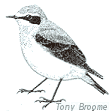
March 2010 Newsletter
Highlights - March 2009 to February 2010.
Wirral Birding - a Personal Perspective.
Voluntary Wardens Wanted for Neston Reedbed.
February Bird News.
Forthcoming Events.
Latest Newsletter.
Highlights - March 2009 to February 2010
As usual my review of the year starts in March because this website first started in March, 12 years ago.
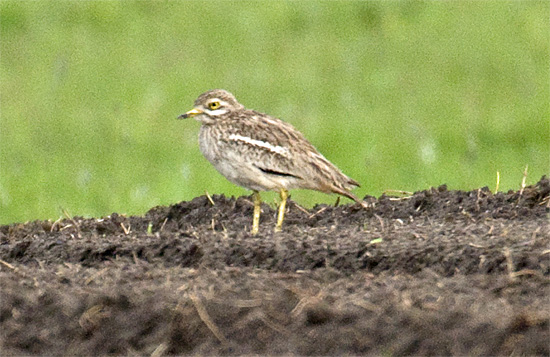
2008/09 had been a fantastic winter for Short-eared Owls and this continued on into March with a great count of 27 on Burton Marsh on the 15th. It had also been a good winter for Waxwings across the country and we had 10 in March and 19 in April, both in the Newton/Gilroy side of West Kirby. A period of fresh south-easterly winds in April resulted in good numbers of migrants including max counts of 100 Wheatears at Leasowe Lighthouse and 146 White Wagtails and 20 Tree Pipits at Gronant.
There was an excellent crop of rarities through the past 12 months starting with a Red-rumped Swallow by Carr Lane, Moreton, mid-April, followed by a Stone Curlew in the fields near Leasowe Lighthouse at the end of that month. A first for Cheshire and Wirral was a Paddyfield Warbler on June 5th which stayed a further few days on Hilbre. Next was a rare wader - a Terek Sandpiper which turned up at Heswall on Jul 14th and seen somewhat distantly the following day. After this visit of a wader which breeds in north Asia and Europe we had two Long-billed Dowitchers which breed in northern Canada and Alaska. One may well have over-wintered here as one was seen again in February. A Red-necked Phalarope, Citrine Wagtail and a Greenish Warbler were all seen in September. Other good birds were two Shorelarks at the Point of Ayr in the early part of the winter, again one of these may have over wintered as one was found near Gronant in January and February.
The star bird of the year was undoubtedly the Wilson's Storm Petrel in the Mersey mouth on September 5th, although I do not yet know if it is claimable for Cheshire and Wirral, rather than just Lancashire (north Merseyside) - but a great find. Sea watching generally in September was excellent with both Balearic and Sooty Shearwaters along with hundreds of Manx Shearwaters together with several Sabine's Gulls and skuas of four different species. Sea-watching was good all year starting with 6-7,000 Common Scoter off Point of Ayr in March. 630 Gannets off Hilbre on May 8th was one of the highest ever counts there. In late summer several hundred Manx Shearwaters formed a feeding flock in the mouth of the estuary for a week or two. There were the usual 1,000 plus Sandwich terns using the estuary to feed up before heading south, they seemed to particularly like the drained West Kirby Marine Lake to roost in. However, it was a disastrous year for Common Terns as the nationally important colony at Shotton was deserted before breeding began, for unknown reasons. The Little Terns at Gronant did well with 123 fledged young from 111 pairs. Good numbers of Gannets were seen right through to early December when 36 were counted on the 6th. The cold still weather in January resulted in a large flock of Great Crested Grebes off north Wirral with 455 counted, also present were 21 Scaup with 39 off Hilbre. A Velvet Scoter was observed off Hilbre on several days through January and February.
The unusually cold weather in January brought some cold weather movements including good numbers of Woodcock whereas Fieldfares and Redwings appeared to be everywhere. West Kirby Marine Lake was full of ducks and several good size flocks of Pink-footed Geese passed through the estuary.
It was a good year for Spoonbills with at least one present for eight of the last twelve months, with maximum of six in May at Parkgate. Little Egrets peaked at 315 in September, it will be interesting to see if they have been effected by the coldest winter since they first became resident on the estuary.
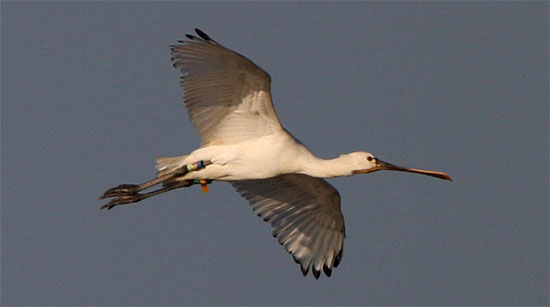
Wirral Birding - A Personal Perspective
by Tom Giles
A forgotten corner of North West England, Wirral is one of the unheralded jewels of birding. Perhaps this is because it is not blessed with a plethora of hides and settled birds, but birds there are - everywhere. The area has an immense coastline relative to its size bounded as it is by two major estuaries and Liverpool bay. There is also sandy heathland, ancient woodland and lowland farmland. Large areas are set aside as green spaces for public use and as such provide excellent opportunities for the open minded birder to explore. The only habitat not represented is upland and even here the proximity of the north Wales hills means some of these birds descend to Wirral in the winter.
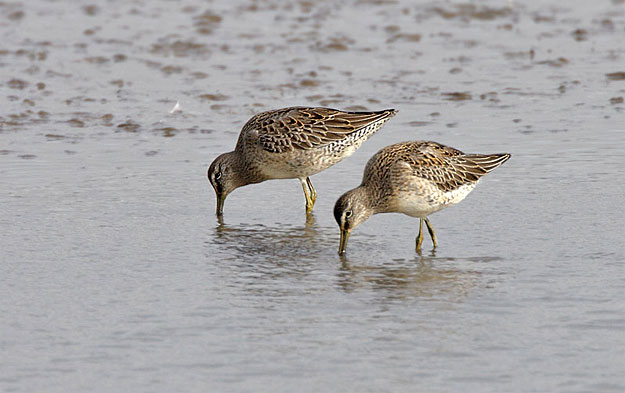
Working Wirral for birds presents some interesting challenges. Large areas of unbounded habitat open to public access means the birds tend to be mobile. This was illustrated effectively by Long-billed Dowitchers in the area in autumn 2009. Initially a single bird appeared at Inner Marsh Farm with a second at Marshside RSPB just north of Southport. The following day both birds had located at Inner Marsh Farm. Several days later they hopped across the estuary to the Connahs's Quay reserve. Similar movements of wetland birds between the estuary and Inner Marsh Farm are commonplace making it common to travel there to find a bird is absent, then to hear of it reappearing a few days later.
In the north of Wirral the situation is even more difficult. There are very few well defined, undisturbed holding localities for birds. It is not unusual for birds here to be single sightings by one observer only. This can sorely test the inexperienced or unconfident. Birders are on the whole an open and friendly lot, but when it comes to rarities scepticism and even jealousy can run high. Anyone who wants a vivid account of how nasty things can get should read 'Arrivals and Rivals: a birding oddity' by Adrian Riley. This is not usually vindictive against an unknown observer but is merely scepticism learned from mistakes made in the past coupled with a little jealousy.
The north coast of Wirral at times resembles the north Norfolk coast. There is now a regular wintering flock of about 150 Brent Geese around Hilbre, Mediterranean Gulls are always present in the winter and the wader flocks are of immense proportions. Around any of the groynes as the tide falls the view can resemble Titchwell shore, affording good views of sanderling, knot, bar-tailed godwit and grey plover. There are also almost guaranteed sightings of purple sandpiper down to a few feet if you know where to look. Snow bunting occur every winter but they are usually mobile and only present in small numbers so often you have to find them yourself. Just like Titchwell, you have to contend with the dog walkers.
Autumn is another special time here. Seabird movements can be spectacular, again on occasions matching well known and immensely popular hot-spots on the east coast. The specialty of the area is Leach's petrel. In a really good wreck these can be seen well up the Estuary: I have seen them at Seacombe ferry whilst waiting to travel to work in the morning. More usually, however, they are confined to the north coast. Here, on a North Westerly wind they can be seen at several places from New Brighton to Hilbre island, some of the points even allowing the luxury of watching from the comfort of a parked car. Skuas can also be seen well. Often somewhat distant they will sometimes take up residence for a few days along the beach. To this day the most spectacular view of pomarine skua I have seen was a bird circling around Leasowe Lighthouse. This was a full adult, complete with characteristic twisted spoons, flying lazily around on a glorious, sunny late summer day. Sights like this are in essence what makes Wirral special.
Off the West coast we have the extensive saltmarsh which has now grown over the old docks from Heswall to Chester. This is an immense area of wild habitat providing a home for a multitude of birds. The problem - inaccessibility. Large flocks of wildfowl, waders and passerines can be seen in the distance but a lack of engineered paths makes exploring this area next to impossible. Wild swans and geese winter in the area and a superb variety of raptors can be enjoyed. On the occasions when a high tide pushes up to the sea wall all the birds suddenly come within reach. Water rail appear from gullies and creeks, occasionally accompanied by an unexpected spotted crake whilst short eared owl enjoy the feast of half drowned voles. Peregrine and merlin meanwhile harvest the avian bounty. This area is exceptional in all ways and effort spent in sensitive exploration is always well rewarded.
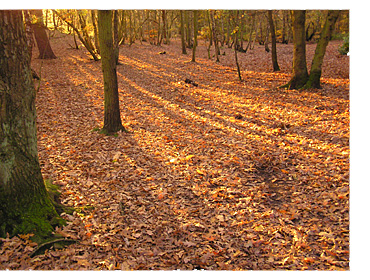 Passerines are generally under-watched. The Wirral Way is a corridor of old
fashioned farmland and high hedgerows where yellowhammer and bullfinch
still prosper. I wonder how many birds go unrecorded on the heathland of
Thurstaston common and adjoining woodland of Royden
Park. Just because
there is nothing reported on the 'bird news' websites certainly doesn't mean
there is nothing here. Similar under-watching of the mature woodland,
mainly found in south Wirral, also leaves me wondering. Pied flycatcher
have been found in summer residence here, who knows what else is to be
found.
Passerines are generally under-watched. The Wirral Way is a corridor of old
fashioned farmland and high hedgerows where yellowhammer and bullfinch
still prosper. I wonder how many birds go unrecorded on the heathland of
Thurstaston common and adjoining woodland of Royden
Park. Just because
there is nothing reported on the 'bird news' websites certainly doesn't mean
there is nothing here. Similar under-watching of the mature woodland,
mainly found in south Wirral, also leaves me wondering. Pied flycatcher
have been found in summer residence here, who knows what else is to be
found.
Wirral is an area of discovered bounty yet undiscovered riches remain untapped. Steal yourself away from the well trodden paths and 'follow the leader' crowds and get exploring. You really can find your own gems. Just don't lose faith in yourself when the bird has moved on when the crowds arrive.
Voluntary Wardens Needed to Protect Neston Reed Bed
 Once again the
RSPB are organising voluntary wardening at Neston Reed Bed, the scheme will
begin near the end of March and run through until the end of May. Wardening will take
place each evening in order to protect this important habitat from
disturbance. I know in the past this scheme has
attracted birders who have realised what a good opportunity this location is
for some serious birdwatching with the possibility of seeing migrating
Ospreys and Marsh Harriers, large numbers of Little Egrets flying in to
roost, Bearded Tits, Hen Harriers, Short-eared Owls and the numerous birds
which breed in the reed bed. If you are interested please contact Geoff Robinson (Geoffrey.Robinson@rspb.org.uk),
telephone 0151 336 7681.
Once again the
RSPB are organising voluntary wardening at Neston Reed Bed, the scheme will
begin near the end of March and run through until the end of May. Wardening will take
place each evening in order to protect this important habitat from
disturbance. I know in the past this scheme has
attracted birders who have realised what a good opportunity this location is
for some serious birdwatching with the possibility of seeing migrating
Ospreys and Marsh Harriers, large numbers of Little Egrets flying in to
roost, Bearded Tits, Hen Harriers, Short-eared Owls and the numerous birds
which breed in the reed bed. If you are interested please contact Geoff Robinson (Geoffrey.Robinson@rspb.org.uk),
telephone 0151 336 7681.
February Bird News
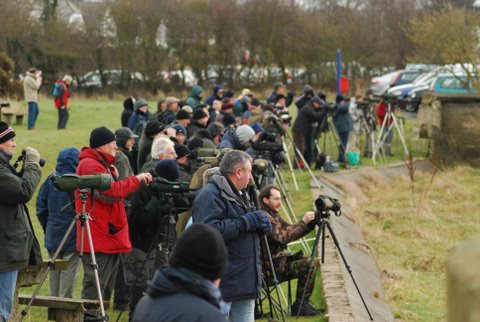
The month got off to an excellent start with two high tides covering the marsh on the 1st and 2nd. The highlight was undoubtedly the 12 Short-eared Owls off Parkgate on the 2nd, these were counted by myself between Cottage Lane and the Boathouse Pub. A Spoonbill was also present and both Marsh and Hen Harriers. There were very few Water Rails but one flew just over head height into the car park! The Spoonbill remained all month being joined by a second bird in the fourth week. Five Long-tailed Duck flew west off Point of Ayr on the 1st.
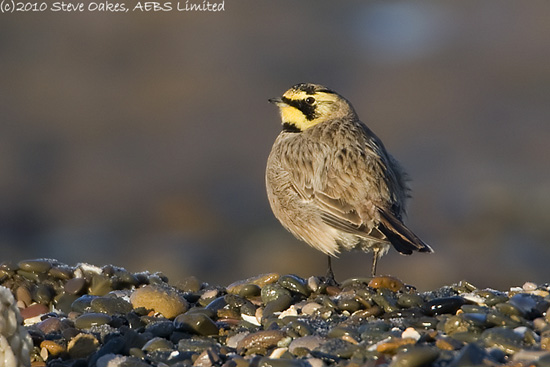
A Velvet Scoter remained off Hilbre all month, as did a Shorelark east of Gronant, a second Shorelark may also have been around but was very elusive. A Long-billed Dowitcher was spotted on Burton Marsh on the 14th, it was at Inner Marsh Farm the next day then seen just a couple more times by Decca Pools, but somewhat distant. A Cetti's warbler was heard calling just south of Neston Reedbed on a nice sunny day towards the end of the month.
There were many sightings of Mediterranean Gulls with two or three present at New Brighton and further along north Wirral up to Leasowe. On the 24th a Great White Egret was reported over Meols but not relocated. The end of the month saw the start of a northward movement of Little Gulls with 15 off Hilbre.
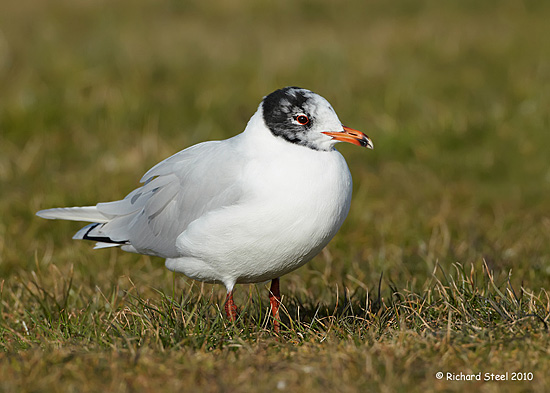
Richard Smith.
What to expect in March
March is often the month when we get the highest tides of the year and four are predicted this year, three at the beginning of the month and one at the end. Given a good west wind we should be in for a birding treat if the tide covers the marshes, bringing the birds close in to the shore.
March is also the month when we start to see the first of the spring migrants, an exciting time for all birdwatchers - I always look forward in particular to the first Wheatears! The table below is the first arrival date for some of our commoner migrants over the past three years - although, sadly, Cuckoos no longer fall into the 'common' category. Don't forget to tell me if you see any early arrivals and I'll put the details in the next newsletter.
| Species | 2009 | Location (09) | 2008 | 2007 |
|---|---|---|---|---|
| White Wagtail | 4th March | Hoylake Langfields | 9th March | 13th March |
| Wheatear | 14th March | Burton Point | 13th March | 12th March |
| Sand Martin | 15th March | Hilbre | 16th March | 15th March |
| Swallow | 16th March | Leasowe | 15th March | 16th March |
| House Martin | 30th March | Inner Marsh Farm | 11th April | 1st April |
| Willow Warbler | 31st March | West Kirby | 31st March | 3rd April |
| Swift | 8th April | Inner Marsh Farm | 22nd April | 16th April |
| Whitethroat | 11th April | Meols | 11th April | 15th April |
| Cuckoo | 26th April | Deeside | 23rd April | 15th April |
Other migrants will include Avocets with some passing through on their way to Lancashire, hopefully some will stay here to breed. Out to sea we will have our first Gannets and Sandwich Terns of the year, and Little Gulls will be passing through on their way to breed in the Baltic. The last two springs have seen remarkable numbers of Common Scoters off our coasts with 5,000 off north Wirral in 2008 and at least 6,000 off Point of Ayr in 2009, hopefully we will get the same again and there may also be some rarer scoters among the masses.
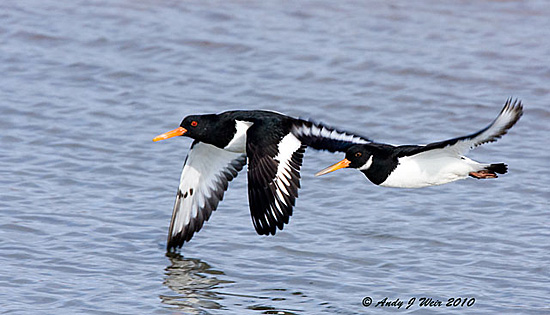
Forthcoming Events
March Highest Spring Tides (Liverpool)
Also see
Tides page.
1st March, 11.27hrs (GMT), 10.0m.
2nd March, 12.09hrs (GMT), 10.2m.
3rd March, 12.51hrs (GMT), 10.0m.
31st March, 1245hrs (BST), 9.9m.
Forthcoming Events
Organised by the
Wirral Ranger Service ,
Flintshire Countryside Service and/or the RSPB:
All these events and walks have bird interest, even those not advertised
specifically for birdwatching. No need to book for these events unless
specified - please check below.
Also see 'Wingspan', a Diary of Birdwatching
Events for Wirral and the North Wales Coast.
Monday 1st March, 10am start Marsh Matters – High tide at
Riverbank Road, Heswall.
Join the Rangers and RSPB Wardens at Riverbank Road car park to watch
thousands of birds gathering to roost in the marsh as the tide covers the
mudflats of the Dee Estuary. This activity may bring out some hunting
raptors. (High tide: 10.0m, 1127hrs) Meet at Riverbank Road car park, Lower
Heswall. Ring 0151 648 4371 for info.
Tuesday 2nd March, 10.30am start High Tide
at
Parkgate (High tide: 10.2 m, 1209hrs).
Join RSPB wardens to watch the tide rise and possibly cover the entire
saltmarsh at Parkgate. Keep an eye out for the reserve's usual suspects,
such as Short-eared Owls, Hen Harriers and Merlins, as well as hopefully
seeing some of the more secretive species of birds and mammals
as they are forced out by the rising tide. Meet at Old Baths Car Park,
Parkgate.
Ring 0151 336 7681 for info.
Sunday 7th March - Marsh and Scouse - 10am
start.
A guided walk from Ness Botanic Gardens down to Burton Marsh and back
across farmland. Upon return to Ness Gardens a warming "scouse" stew will
be served. £7.95 per person phone 0151 353 0123 to reserve a place as
booking is essential.
Wednesday 17th March, 9.30am Mud’n’Marsh -
St Patrick’s Day Special.
Join the Rangers and RSPB Wardens for a special birdwatch on
Heswall Shore. After watching thousands
of waders and wildfowl on the mudflats of the Dee Estuary retire to
Sheldrakes Restaurant for a bowl of Irish Stew and perhaps a pint of
Guinness?! Tickets are £5 and are limited in number. Ring 0151 648 4371
to book a place.
Saturday 20th March, 9am - 12noon Spring
Equinox Bird Race.
Fancy a spot of competitive birding? Then join the Rangers and RSPB
Wardens down at Wirral Country Park to test your birding skills! We’ll
divide into two teams and walk the same circular route in opposite
directions and see who comes back with the most species on their list!
Booking essential, ring 0151 648 4371.
Sunday 21st March, 3pm start,
Parkgate Raptor Watch.
The Dee Estuary Nature Reserve is a vital wintering ground for many birds
of prey. Discover these impressive birds in their wild habitat, hunting
and roosting on the saltmarsh with help from staff and volunteers from
the RSPB. Meet at the Old Baths Car Park, Parkgate. For further info ring
0151 336 7681.
Saturday 27th March, 6.30am – 8.30am
Woodland Wildlife.
With the leaves not yet out and birds and mammals breeding activity,
March is a great time for a wander in the woods. Join the Rangers in
Stapledon Woods for woodpeckers,
Nuthatches and much more. Booking essential, ring 151 648 4371.
Tuesday 30th March, 10am start Marsh
Matters – High tide at
Riverbank Road, Heswall.
Join the Rangers and RSPB Wardens at Riverbank Road car park to watch
thousands of birds gathering to roost in the marsh as the tide covers the
mudflats of the Dee Estuary. This activity may bring out some hunting
raptors.
(High tide: 9.9m, 1203hrs) Meet at Riverbank Road car park, Lower
Heswall. For further info ring 0151 648 4371.
Friday 16th April -
Point of Ayr Migrants - 10am start.
The Point of Air is a fantastic mixture of habitats and is an outpost on
the Dee Estuary. Therefore, it is a brilliant place to look for unusual
and rare birds as the migration season really kicks in. We will be on the
look out for whimbrel, terns and other birds as they move from their
wintering areas. Meet at the Smuggler's Inn Car Park, Talacre, dress
appropriately for the weather and bring your binoculars if you have any.
0151 336 7681 for details.
Sat 17th Apr - Up with the Lark at Ness Gardens - 7am start.
Take an early morning walk in wonderful surroundings as we listen to the
dawn chorus at Ness Botanic Gardens (led by RSPB Wardens) followed by
breakfast. £7.95 per person phone 0151 353 0123 to reserve a place as
booking is essential.
|
 |
The blank (UK) Birding Webring is a collection of quality birding web sites that are based in the United Kingdom. Visit the webring homepage for more information, or A complete list of all the sites in the webring is available by clicking here. previous site in ring : random site in ring : next site in ring |